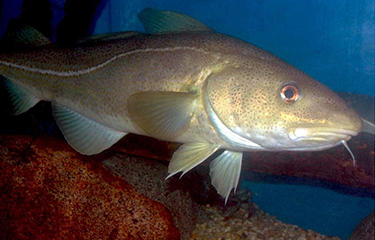The New England Fishery Management Council has approved a new 10-year rebuilding plan for Gulf of Maine cod that has a 70 percent probability of rebuilding the beleaguered stock by 2033.
Under Framework Adjustment 65 to the Northeast Multispecies Fishery Management Plan, the strategy is to set a fishing mortality rate at 60 percent of what would produce maximum sustainable yield, and produces a low fishing mortality rate stemming from low annual catch limits during the 10-year rebuilding period, according to a summary from the council after its 5 to 8 December meeting in Newport, R.I.
The acceptable biological catch for cod of 551 metric tons is already in place for the 2023 and 2024 fishing years will not change under the rebuilding plan. But the plan calls for tighter accountability measures to ensure any catch overages are paid back.
“Under the existing accountability measures, a pound-for-pound payback is applied to the commercial fishery when overages occur – even if commercial vessels are not the cause of the overage,” according to the council. “If approved by NOAA Fisheries, the temporary modification would be in place if accountability measures are applied to 2023-2025 annual catch limits, after which the AMs (accountability measures) would revert to the current approach. The modification includes a mechanism for the commercial fishery’s pound-for-pound payback to be reduced if all catch from U.S. fisheries is below the total ACL (allowable catch limit) during the year following the overage.”
Framework 65 is the latest effort in more than 20 years of the council’s efforts to rebuild cod. In 2020 the Conservation Law Foundation petitioned the Department of Commerce seeking to force an end to all directed cod fishing in the region, arguing all management efforts had failed.
“The Atlantic cod population is struggling, and this vote is finally a step in the right direction,” Conservation Law Foundation Senior Policy Analyst Allison Lorenc said in a statement from the group after the council’s action. “After two failed attempts, this new plan will reduce fishing pressure to help cod recover while supporting fishing communities. Our hope is that this is the first of many decisions that will set cod on a path to a healthy population.”
Cod stocks in the Gulf of Maine have been in dire straits for years, and the cod fishery all-but collapsed due to drop sin stocks. Studies have indicated warming waters in the region contributed to the decline, and cod landings in Maine declined to extremely low levels in 2018. In 2021, the council suggested a catch limit of just 514 metric tons due to biomass declines in the fishery.
Photo courtesy of NOAA







